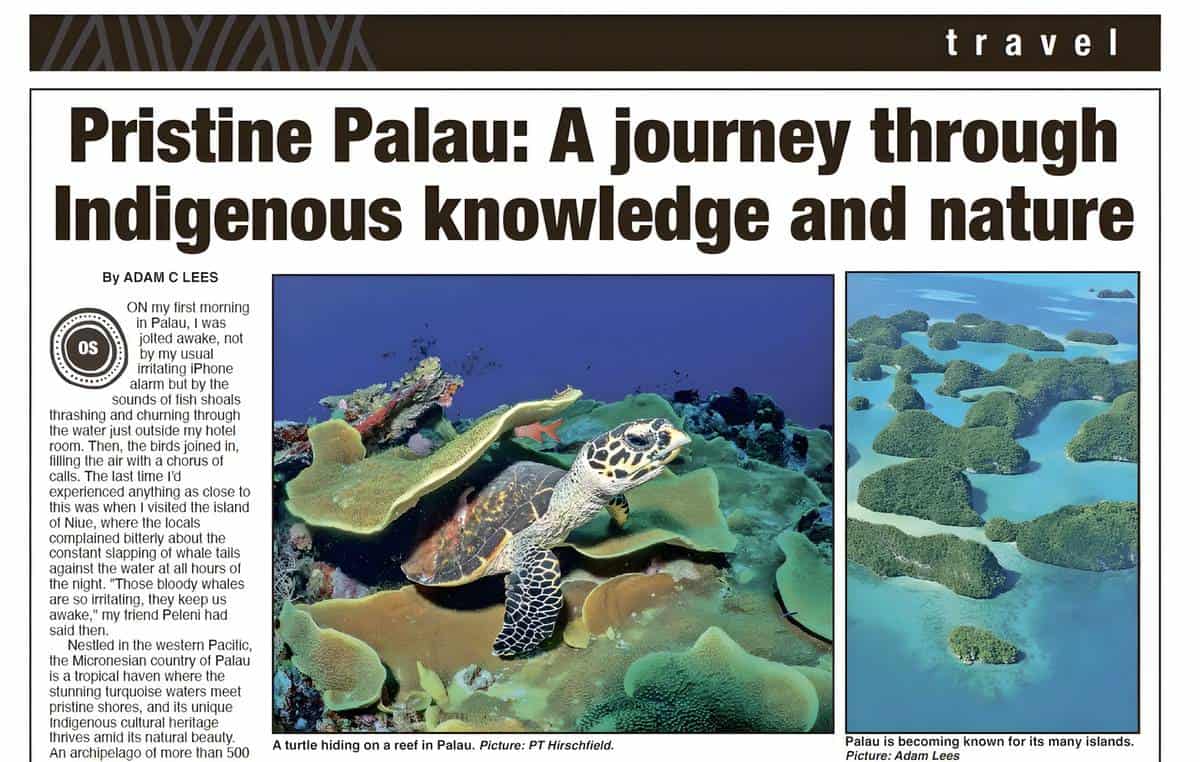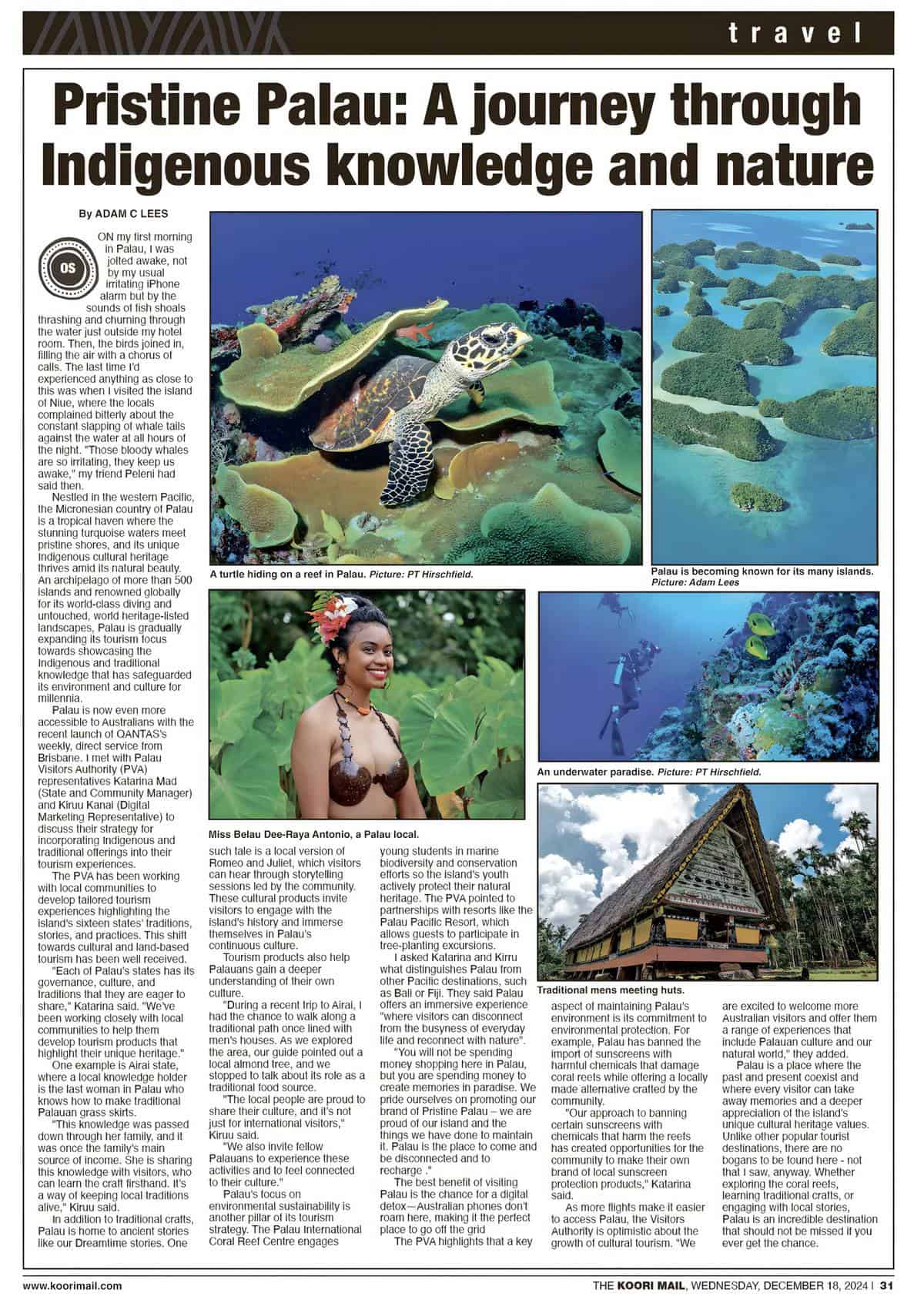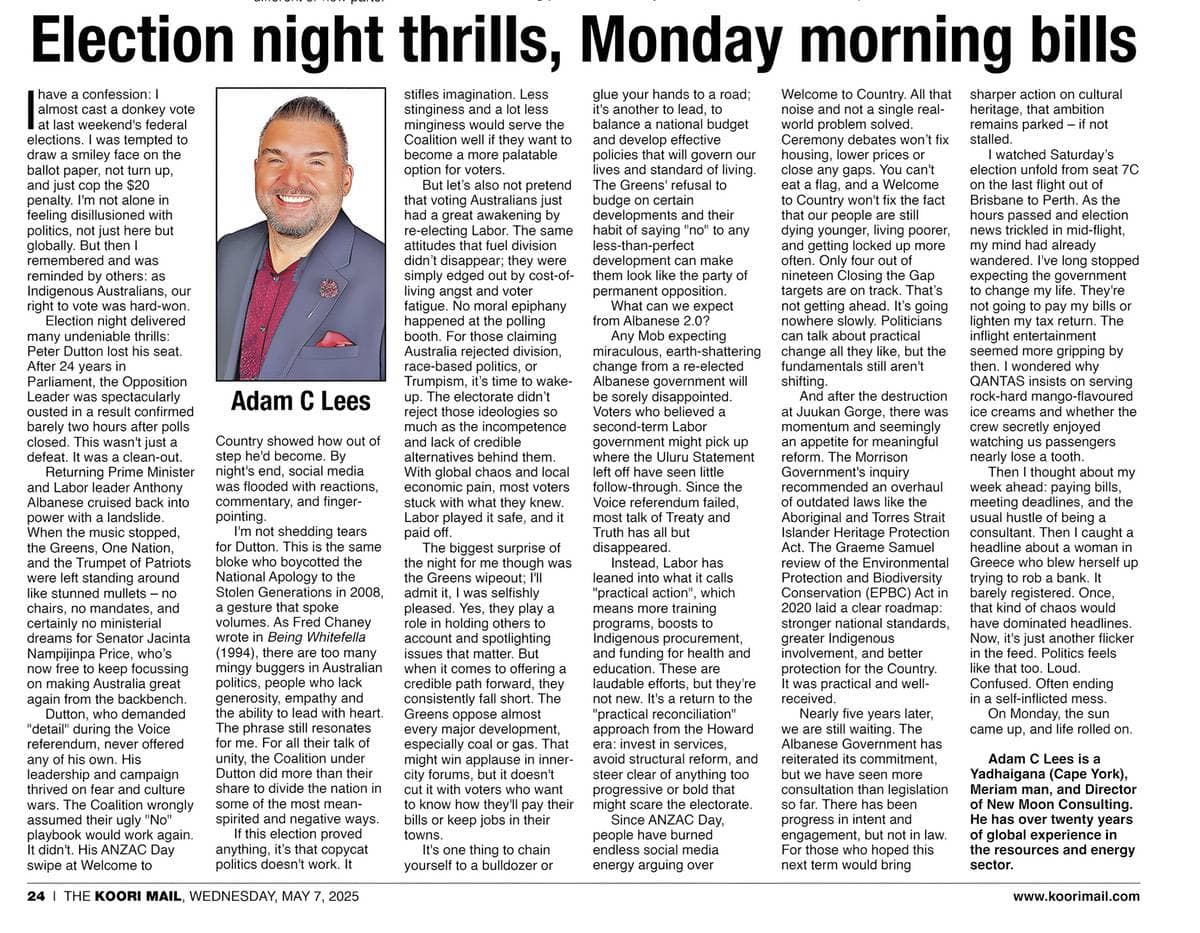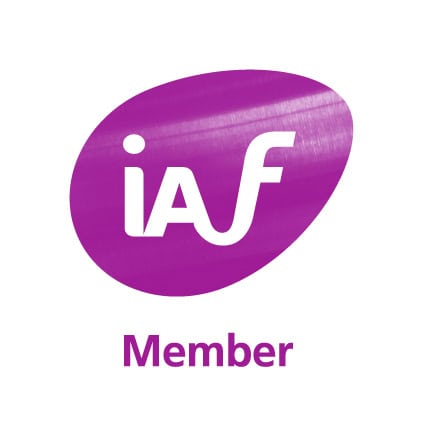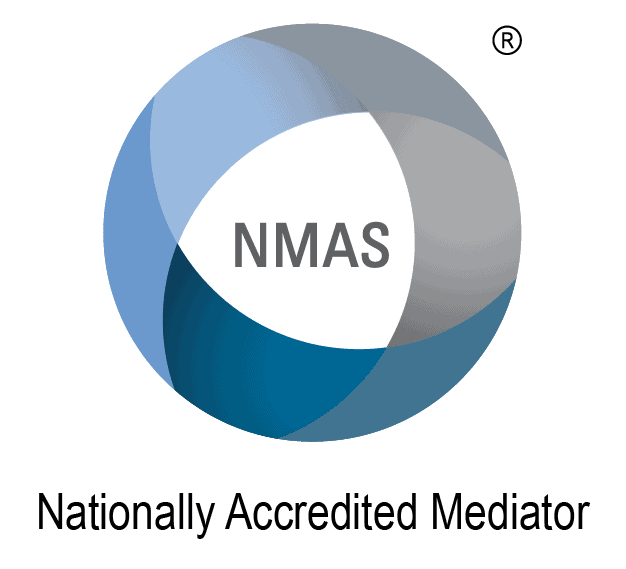On my first morning in Palau, I was jolted awake, not by my usual irritating iPhone alarm but by the sounds of fish shoals thrashing and churning through the water just outside my hotel room. Then, the birds joined in, filling the air with a chorus of calls. The last time I’d experienced anything as close to this was when I visited the island of Niue, where the locals complained bitterly about the constant slapping of whale tails against the water at all hours of the night. “Those bloody whales are so irritating, they keep us awake,” my friend Peleni had said then.
Nestled in the western Pacific, the Micronesian country of Palau is a tropical haven where the stunning turquoise waters meet pristine shores, and its unique Indigenous cultural heritage thrives amid its natural beauty. An archipelago of more than 500 islands and renowned globally for its world-class diving and untouched, world heritage-listed landscapes, Palau is gradually expanding its tourism focus towards showcasing the Indigenous and traditional knowledge that has safeguarded its environment and culture for millennia.
Palau is now even more accessible to Australians with the recent launch of QANTAS’s weekly, direct service from Brisbane. I met with Palau Visitors Authority (PVA) representatives Katarina Mad (State and Community Manager) and Kiruu Kanai (Digital Marketing Representative) to discuss their strategy for incorporating Indigenous and traditional offerings into their tourism experiences.
The PVA has been working with local communities to develop tailored tourism experiences highlighting the island’s sixteen states’ traditions, stories, and practices. This shift towards cultural and land-based tourism has been well received.
“Each of Palau’s states has its governance, culture, and traditions that they are eager to share,” Katarina said. “We’ve been working closely with local communities to help them develop tourism products that highlight their unique heritage.”
One example is Airai state, where a local knowledge holder is the last woman in Palau who knows how to make traditional Palauan grass skirts.
“This knowledge was passed down through her family, and it was once the family’s main source of income. She is sharing this knowledge with visitors, who can learn the craft firsthand. It’s a way of keeping local traditions alive,” Kiruu said.
In addition to traditional crafts, Palau is home to ancient stories like our Dreamtime stories. One such tale is a local version of Romeo and Juliet, which visitors can hear through storytelling sessions led by the community. These cultural products invite visitors to engage with the island’s history and immerse themselves in Palau’s continuous culture.
Tourism products also help Palauans gain a deeper understanding of their own culture.
“During a recent trip to Airai, I had the chance to walk along a traditional path once lined with men’s houses. As we explored the area, our guide pointed out a local almond tree, and we stopped to talk about its role as a traditional food source.
“The local people are proud to share their culture, and it’s not just for international visitors,” Kiruu said.
“We also invite fellow Palauans to experience these activities and to feel connected to their culture.”
Palau’s focus on environmental sustainability is another pillar of its tourism strategy. The Palau International Coral Reef Centre engages young students in marine biodiversity and conservation efforts so the island’s youth actively protect their natural heritage. The PVA pointed to partnerships with resorts like the Palau Pacific Resort, which allows guests to participate in tree-planting excursions.
I asked Katarina and Kirru what distinguishes Palau from other Pacific destinations, such as Bali or Fiji. They said Palau offers an immersive experience “where visitors can disconnect from the busyness of everyday life and reconnect with nature”.
“You will not be spending money shopping here in Palau, but you are spending money to create memories in paradise. We pride ourselves on promoting our brand of Pristine Palau – we are proud of our island and the things we have done to maintain it. Palau is the place to come and be disconnected and to recharge .”
The best benefit of visiting Palau is the chance for a digital detox—Australian phones don’t roam here, making it the perfect place to go off the grid
The PVA highlights that a key aspect of maintaining Palau’s environment is its commitment to environmental protection. For example, Palau has banned the import of sunscreens with harmful chemicals that damage coral reefs while offering a locally made alternative crafted by the community.
“Our approach to banning certain sunscreens with chemicals that harm the reefs has created opportunities for the community to make their own brand of local sunscreen protection products,” Katarina said.
As more flights make it easier to access Palau, the Visitors Authority is optimistic about the growth of cultural tourism. “We are excited to welcome more Australian visitors and offer them a range of experiences that include Palauan culture and our natural world,” they added. Palau is a place where the past and present coexist and where every visitor can take away memories and a deeper appreciation of the island’s unique cultural heritage values. Unlike other popular tourist destinations, there are no bogans to be found here – not that I saw, anyway. Whether exploring the coral reefs, learning traditional crafts, or engaging with local stories, Palau is an incredible destination that should not be missed if you ever get the chance.
Adam C Lees is a Yadhaigana (Cape York), Meriam man, and Director of New Moon Consulting. He has over twenty years of global experience in the resources and energy sector.
